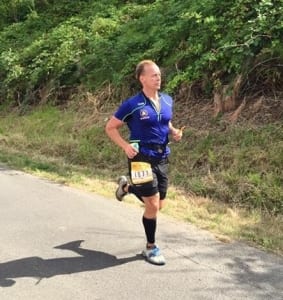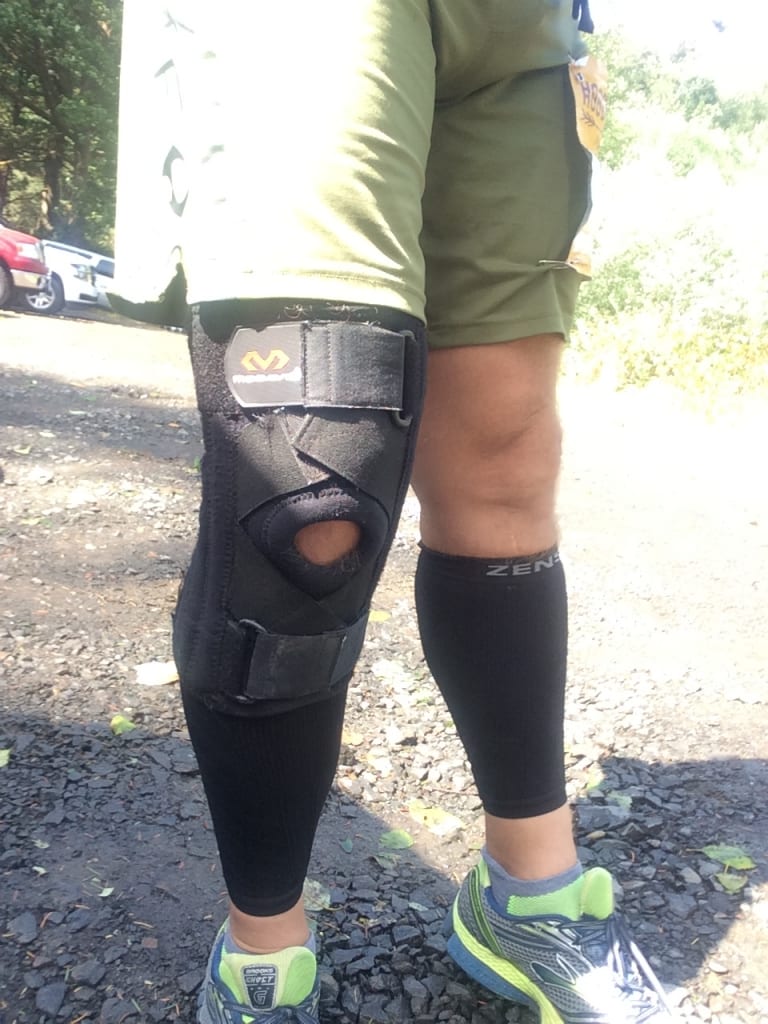
A few years ago, I had cause to look up “torn calf muscle” on Google, and was more than a little irked to read it described as “a common injury among middle-aged weekend warriors”. Well, f*ck you too, Google. Talk about literally adding insult to injury…
Growing up, the last word anyone would have used to describe me was “athlete”. I was terrible at team sports, normally picked last, somewhat uncoordinated, and quite simply not interested. Running was a punishment, not something I did for fun. Times change, but I've found that there are some definite challenges to becoming an athlete later in life, especially one who specializes is pushing himself through obstacle course racing and endurance events.
The Good
There is some really, really good news about this type of journey. It's never too late to get started on building a better you, and once you start challenging yourself, you'll discover that you're capable of far more amazing things than you ever thought possible.
Steady progress and gains can be made, and will benefit you in all aspects of your life. Other than just health gains, you are likely to find yourself much happier as well – through the direct release of feel-good endorphins released with exercise.
Finding something you're passionate about provides wonderful training motivation . Obstacle course racing is in many ways an ideal adversary, since it clearly illustrates each athlete's weaknesses. There are always areas that could improve with training, and this training can be varied enough to stave off the “workout boredom” that demotivates so many with great intentions to improve themselves.
Of course, it's not all sunshine and rainbows.
As a newly minted masters athlete, I have found that I'm more susceptible to injury than many of my younger competitors or those who've built and maintained a strong athletic base over many years. I've had more than my fair share of injuries while training over the years since adopting a more athletic lifestyle, including a ruptured ACL that required surgery, a torn calf muscle, a partially torn bicep tendon, a few stress fractures, and several bad strains on various parts of my body.
Currently, I'm rehabbing a severely strained deltoid muscle caused by trying a new move (for me) in the gym – a kipping toe to bar. While giving it time to heal, I decided to concentrate on my running. So naturally, on a run a few nights later, my calf muscle cramped badly and was threatening a more serious injury, so I immediately backed off and walked the last half mile or so. Two days later, I went for a light recovery run to test things out, and running slowly along a flat trail I've run hundreds of times before, I felt a “pop” behind my left knee as I strained/pulled my Popliteus muscle.
Was it due to overtraining, unconscious compensation for the other leg's injury, or just coincidence? It doesn't really matter, sometimes when it rains, it pours. It is very likely that pursuing excellence in these type of events will eventually lead to injuries; especially if you're in this category of “middle-aged weekend warriors” as Google pigeonholed me so mercilessly.
Mitigating injuries and the Risk of Same
First off, I'm not an M.D., physiotherapist, or personal trainer. I'm simply an athlete who's willing to share a few of the lessons I've learned over the years. What works for me may not work for you; I'm a huge believer in the n=1 rule when it comes to nutrition, exercise, or recovery. Still, some of these may be helpful.
- Learn to listen to your body. Tons of coaches will say this, but most people don't really know how, and it often takes some painful experiences before you get it. At least, it did for me. As an extension of this, learn the difference between “good” sore and a painful potential injury; the first you can often work through, the latter you should immediately back off until you can assess the damage. As a rule of thumb, dull pain in the muscles is ok, sharp pains that limit range of motion are a great indicator of a strain or possible tear, and pains in the joints should be avoided if at all possible to avoid further damage
- Allow injuries to heal properly. This can be a tough one, as different injuries require different times. A strained muscle may be ok to start pushing again a week or two later. Something more serious like a torn calf muscle will take much longer (~8 weeks), and trying to do too much too soon is likely to cause a recurrence or worsening of the injury. Other injuries such as a torn ACL will require surgical intervention and a significant rehab time to fix properly; ignoring these absolutely will lead to further injury.
- You can continue to train during many injuries, you'll simply have to modify your routine. Pulled hamstring? Try working your grip strength or doing some lifting. I've discovered that many minor leg injuries are not aggravated by hiking, or even rucking with moderately heavy weight; the modality is different enough that it doesn't aggravate the “running” injury.
- Once it's healed, no matter the injury, go slow and take the time to assess where you are in your recovery.
- For me, yoga has been instrumental in keeping my body in good enough shape to compete and participate in as many events as I do each year. It helps balance the body, stretches and lengthens tight muscles, and develops many of the support muscles that can help with both running and obstacles. There are many types of yoga, from slow and relaxing sessions in basic breathing and meditation to power yoga sessions which will dramatically increase your strength and balance while giving you a complete sweat-fest. Find one that works for you; you won't regret it.
- More important than my doctor is my massage therapist. He has done wonders through deep tissue massage of loosening knots and scar tissue from old injuries, and getting me mobile again in record time, while pushing me to the limits of my pain threshold (sadist!). Quality varies greatly here; try to get a recommendation for a good sports-based massage therapist rather than simply walking in to your local massage parlor with a Groupon.
I have a number of effective tools at my disposal, and the knowledge and experience to use them to reduce the frequency and severity of training injuries. I also have a strong desire to compete in some really big and scary events that are coming up quickly, and are likely spaced too close together. Will I find that balance between training hard and attempting really difficult things while still maintaining a healthy and relatively injury-free body? Only time will tell.
Disclaimer: The viewpoints expressed by the authors do not necessarily reflect the opinions, viewpoints and official policies of Mud Run Guide LLC, or their staff. The comments posted on this Website are solely the opinions of the posters.



Great post Nomad and you are absolutely right! As a physio and a PhD student working with strength training in the masters age category I see every day what the body is capable of and it’s a n incredible thing to see. But injuries can happen if you’re not careful and listening to your body is an acquired skill that requires practice. Keep It up!